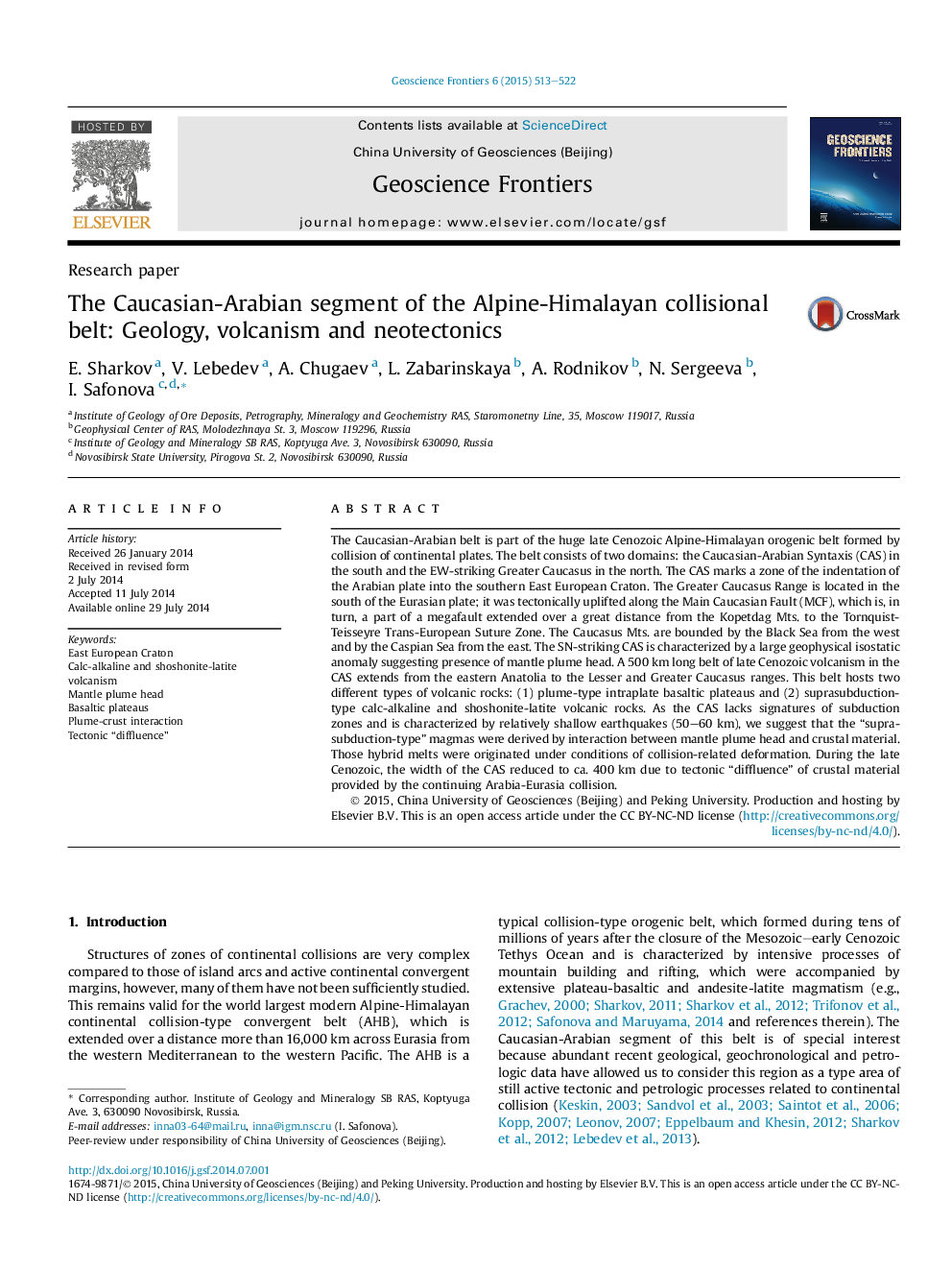| کد مقاله | کد نشریه | سال انتشار | مقاله انگلیسی | نسخه تمام متن |
|---|---|---|---|---|
| 4681603 | 1348861 | 2015 | 10 صفحه PDF | دانلود رایگان |
• The Caucasian-Arabian segment of the AHOB consists of the Greater Caucasus and Caucasian-Arabian Syntaxis (CAS).
• In the late Cenozoic, the CAS was transversely shortened to 400 km due to tectonic “diffluence”.
• The CAS includes Neogene–Quaternary plume-type plateau-basalts and supra-subduction volcanic rocks.
• The calc-alkaline and shoshonite-latite volcanics formed by interaction of mantle plume and crustal material.
The Caucasian-Arabian belt is part of the huge late Cenozoic Alpine-Himalayan orogenic belt formed by collision of continental plates. The belt consists of two domains: the Caucasian-Arabian Syntaxis (CAS) in the south and the EW-striking Greater Caucasus in the north. The CAS marks a zone of the indentation of the Arabian plate into the southern East European Craton. The Greater Caucasus Range is located in the south of the Eurasian plate; it was tectonically uplifted along the Main Caucasian Fault (MCF), which is, in turn, a part of a megafault extended over a great distance from the Kopetdag Mts. to the Tornquist-Teisseyre Trans-European Suture Zone. The Caucasus Mts. are bounded by the Black Sea from the west and by the Caspian Sea from the east. The SN-striking CAS is characterized by a large geophysical isostatic anomaly suggesting presence of mantle plume head. A 500 km long belt of late Cenozoic volcanism in the CAS extends from the eastern Anatolia to the Lesser and Greater Caucasus ranges. This belt hosts two different types of volcanic rocks: (1) plume-type intraplate basaltic plateaus and (2) suprasubduction-type calc-alkaline and shoshonite-latite volcanic rocks. As the CAS lacks signatures of subduction zones and is characterized by relatively shallow earthquakes (50–60 km), we suggest that the “suprasubduction-type” magmas were derived by interaction between mantle plume head and crustal material. Those hybrid melts were originated under conditions of collision-related deformation. During the late Cenozoic, the width of the CAS reduced to ca. 400 km due to tectonic “diffluence” of crustal material provided by the continuing Arabia-Eurasia collision.
Figure optionsDownload as PowerPoint slide
Journal: Geoscience Frontiers - Volume 6, Issue 4, July 2015, Pages 513–522
